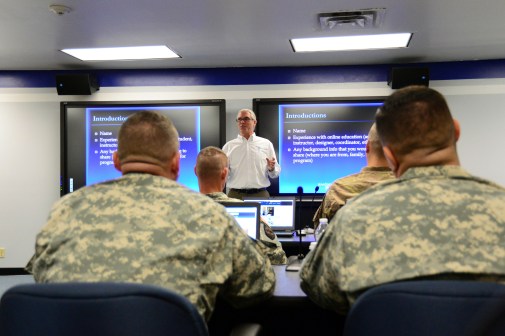2016 tech forecast: cloudy, with cybersecurity and shifting business models
Three major trends will define the technology environment of 2016, according to IT trade organization CompTIA: the expanding integration of cloud computing into business operations; a nationwide rise in cybersecurity standards; and a broad scale shake-out of the industry.
The predictions come from members of CompTIA’s three industry advisory councils, composed of executives and company officers from firms divided into distributor, partner and vendor categories.
On the whole, they say, the outlook is bright for businesses with strong cloud credentials, burly security and dynamic, adaptive approaches to company-client relationships. Those who have yet to embrace these shifts must do so quickly or else risk “becoming irrelevant.”
“Companies of all sizes will require expert resources that can help them develop and implement effective cloud solutions with flexible transaction models to overcome rising data center costs,” said Sergio Farache, vice president, solutions and strategy, Avnet Technology Solutions. “The most successful players in the channel will adapt to this shift.”
Dina Moskowitz, CEO of SaaSMAX and member of the CompTIA Vendor Advisory Council, took her cloud observations a level deeper.
“Based on the momentum we’re experiencing, I predict that a growing percentage of the VAR, MSP and agent channels will be adding more software-as-a-service (SaaS) applications to their line card, including at least one security-related SaaS application,” she said. “I also predict that more and more SaaS development companies, both IT and line of business focused, will be launching and embracing channel partner programs.”
As cloud-based assets proliferate, and in the wake of what has been deemed “The Year of Breaches,” by many observers, an enhanced focus on securing networks and protecting data will come as a shock to no one.
“The year 2016 will be the year of a lot more firing of CIOs and CSOs,” said Paul Cronin, senior vice president, Atrion and member of the CompTIA Partner Advisory Council. “This will be fueled by more cybersecurity attacks on business and negative headlines calling out companies for their inability to protect their data, employees and customers.”
Cronin suggested that more and more industries will move from internal security teams to external ones, outsourcing their asset protection to third parties.
“Consultants, integrators and vendors who can help the CIO design an all-encompassing security business strategy that addresses the concerns of corporate executives and engages the business units will find themselves in the right place at the right time,” he said.
This shift will be only one of numerous changes that the advisory board members say will change the nature of IT business models and necessitate major transformation, particularly for channel companies.
“The days of being a ‘trusted advisor’ are fast fading away,” said Lester Keizer, CEO, Business Continuity Technologies and member, CompTIA Partner Advisory Council. “Our clients today are demanding that we become ‘business partners’ to help them gain the competitive edge in the fast-changing digital world. Our technicians are becoming business analysts; our sales people are moving away from solution selling to insightful selling.”
Overall, said Jay McBain, co-founder, ChannelEyes and member, CompTIA Vendor Advisory Council, “fewer companies will fit the traditional reseller or solution provider label, as many have transformed (or born into) a recurring revenue business model around managed services, cloud, SaaS integrations, line-of-business and vertical specialists.”
“I predict that upwards of 80 percent of technology decisions will come from outside of the IT department and channel partners (and vendors) that understand the line of business software stack and have the integration skills will be big winners.”



